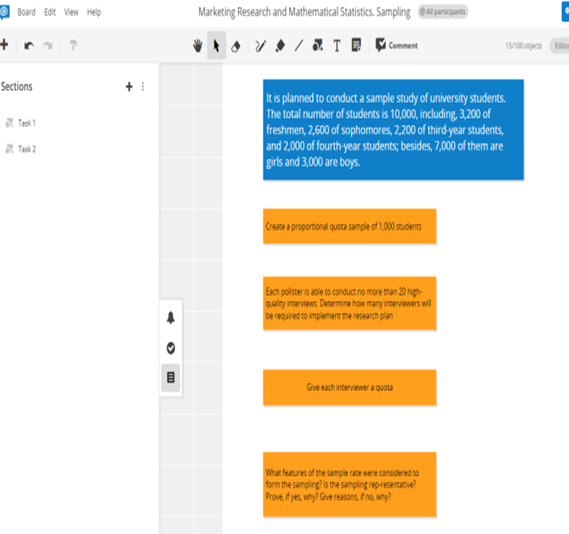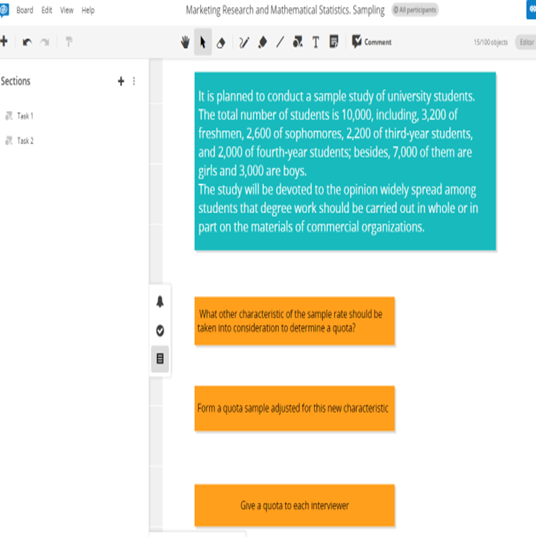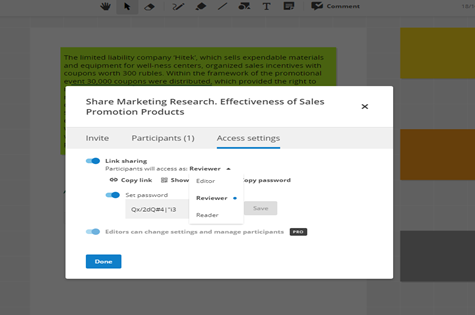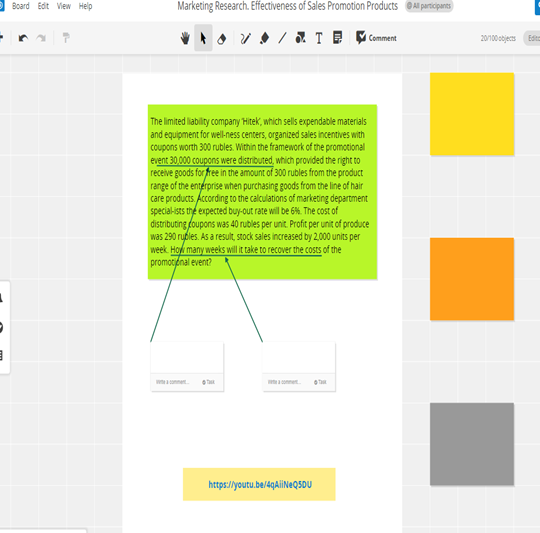Abstract
These modern days are undoubtedly the time of information and communication technologies in all spheres of human life, education and learning processes being not the exception. It is impossible to imagine a person who is in some way outside the information flow. The abundance of information existing and continuously appearing in this flow requires us to be able to analyze and systematize this information, evaluate it for reliability and cut off everything invalid or inessential. These skills are sure to be developed by critical thinking. But how are they learnt and sharpened over time? And how can you become a better critical thinker to make improved decisions, process information more effectively and express yourself more clearly? What measures and tools should be used to advance your critical thinking abilities? Blended learning is believed to be one of these tools, which, in addition to our common teacher-student educational path, also uses the information space, organizing it to maximize its involvement in creating our own educational strategy. The article discusses the possibility of using blended learning for the formation of one of the most important components of critical thinking - the ability to apply analytical skills in various life situations.
Keywords: Blended learning, critical thinking, conceptboard
Introduction
Encompassing information flow around us is sure to become more and more intensive every day. Being extremely important in determining the success or failure of the business in the long run, the volume of information arising in this stream, new participants who broadcast this information do not always allow us be aware of it, understand it rather clearly, process and share information with other people effectively and hence perform, make decision, and communicate properly. The ability to analyze and systematize the information obtained, evaluate it for reliability, store and use only the information of relevance is considered to be a vital quality for a man of today, as well as the ability to unload and remove everything unpractical and odd without any regrets and fear. The development of these abilities is contributed increasingly by the formation of critical thinking, i.e. mastering of observation and improvement of knowledge to substantiate one's point of view, competence to apply analytical skills in various life situations.
You can't help but agree with Dewey (2000) that the goal of compulsory schooling, as well as of any postsecondary education in its entirety is the possibility for everyone to continue his self-education, the latter requiring the formation and further development of such abilities and skills that will be able to promote the growth of the education in question. John Dewey’s philosophical approach emphasizes the idea that ‘Education is not preparation for life; education is life itself.’ Dewey made a strong foundation for the importance of education, underlining that this continuous process is not only time and place to gain knowledge, but also to learn how to live by doing activities in connection with life. According to his point of view the ability to learn from life itself and to make its conditions suitable for everyone to learn in the process of life should be the best result of learning at school (Dewey, 2000).
Problem Statement
Even twenty years ago the amount of knowledge and skills received at school and/or university used to be enough. People could rely on their background education, perform and work successfully for a long period of time, maintaining both high level of private welfare and their competitiveness in the job market. But now the situation has undergone a 180-degree turn considering the rocketing pace of life and a huge flow of information around us. We have already lost the opportunity to live leisurely and steadily, wasting time in indolence. We must keep up with the times. Therefore a school leaver or a graduate must be able to study, moreover he has to know not only how to gain knowledge on his own, but to design independently his development pathway. And if it fails to do so there are risks to become down for the count in the particular field of knowledge, to loose professional competence. As far as we are able to judge, modern education is all cram and unable to solve these problems with its available means. The existing education system is first and foremost focused on audio-visual presentation. Its weak points and disadvantages were on full display after schools had to be shut down amid the public health emergency due to the extraordinary ripple effect of the novel coronavirus. Straightway neither educators nor students were ready to fulfil tasks and solve problems they faced because of a lack of previous experience. First of all, we are speaking about organization of students' and teachers’ individual work. It is sure to be put at the top of priorities. Obvious teacher’s control is unlikely to stimulate development of independent work skills. Our students are so accustomed to be monitored, that they were able to easily avoid it during a pandemic (for example, turning off the camera or microphone at on-line lessons) (Kuznetsova & Fomina, 2019).
Research Questions
In this regard, the search for new models of the organization of education and learning is becoming one of the urgent tasks within the current education system. We suppose the blended learning model can be an appropriate one as it combines effectively classroom practice, online learning techniques, and teamwork techniques. It is the concept that has risen in popularity over the last few years. The way in which blended learning is defined depends usually on circumstances, so it is hard to find a universal, all-encompassing definition for this type of learning. We will base on the following definition offered by Friesen and Norm (as cited in Friesen, 2012) in his Report "Defining Blended Learning" and widely promoted by Wikipedia: ‘Blended learning is an approach to education that combines online educational materials and opportunities for interaction online with traditional place-based classroom methods. It requires the physical presence of both a teacher and a student, with some elements of student control over time, place, path, or pace’. As you can see, blended learning doesn’t replace face-to-face training with a teacher, the latter incorporates technology to enhance the learning experience and broaden understanding of certain topics. The traditional teacher-student information flow provides an organized online space that allows students to control pace, time and an educational vector of their own development and thereby contributes to the formation of planning, control and self-development skills, as well as the integration of learning experience both offline and online.
Purpose of the Study
The paper touches on the possibility of developing one of the components of critical thinking, namely, the ability to apply analytical skills in various students’ life situations in the framework of blended learning.
Research Methods
It should be mentioned that our research is mainly exploratory, i.e. intends merely to study a problem in order to have a better understanding of it, to determine the research design, sampling methodology and data collection method in future (Saunders et al., 2012).
Findings
We have decided to organise research findings according to importance of main categories in order to explain and analyze them in effective way rendering the material clearer and more comprehensible for readers.
Problem 1 for Classroom Activity
Let’s take the problem relevant to the topic ‘Sampling‘, the former can be used both at the subject Marketing Research and Mathematical Statistics. As seen in Figure 1 below.

First, we set up a problem, based either on real life event or close-to-real conditions. Then some tasks to be solved are formulated.
: It is planned to conduct a sample study of university students. The total number of students is 10,000, including, 3,200 of freshmen, 2,600 of sophomores, 2,200 of third-year students, and 2,000 of fourth-year students; besides, 7,000 of them are girls and 3,000 are boys.
- Create a proportional quota sample of 1,000 students;
- each pollster is able to conduct no more than 20 high-quality interviews. Determine how many interviewers will be required to implement the research plan;
- give each interviewer a quota;
- what features of the sample rate were considered to form the sampling? Is the sampling representative? Prove, if yes, why? Give reasons, if no, why?
Let us add the following information to the statement of problem. As seen in Figure 2 below

The study will be devoted to the opinion widely spread among students that degree work should be carried out in whole or in part on the materials of commercial organizations.
- What other characteristic of the sample rate should be taken into consideration to determine a quota?
- Form a quota sample adjusted for this new characteristic;
- Give a quota to each interviewer.
With critical thinking formation in mind, it is really interesting to review and explain this problem learning by both mathematical statistics and marketing. In the first case, within mathematical statistics, it will be the very bridge between mathematics and problems encountered in practice, indicating one of the models developed in the study of the statistical concept of sampling. In the second case, within marketing, the same task illustrates another aspect: the ability to apply available knowledge of mathematical statistics in practice, thereby, caring not so much about acquisition and accumulation of some knowledge useful in later life, but about the development of the ability to apply it, moreover, to translate this knowledge into competitive advantage. F. Ray Marshall, the Professor in Economics and Public Affairs at the University of Texas at Austin, paid much attention to the American educational system. From his point of view the system has worked brilliantly until recently, but it will do so no longer. He tried to solve the problem how to maximize the skill of work force. Being Secretary of Labour under President Carter, he expanded public service and job-training programs, as a part of Carter's economic stimulus program. Moreover, his great idea was to develop national learning system where all institutions are organized to learn and to act on what they learn (Marshall & Tucker, 1992). The ability to think critically in a person's trait arsenal greatly contributes to the fulfilment of these tasks. That’s why the following statement by Marshall and Tucker (1992) is also interesting in that context. He points out:
The future now belongs to societies building themselves to learn. ... Nations that want high incomes and full employment must develop policies that emphasize the acquisition of knowledge and skills by all members of the society, and not just by a selected few. (p. viii)
Conceptboard
So, how can blended learning help us solve the problem in question and improve the critical thinking and problem-solving abilities of our students? In our work, we are going to use, for example, the conceptboard - a free collaborative online whiteboard for presentations, it is sure to be a useful tool for teacher's work with students and students' independent work on group projects (Conceptboard, 2021). Among main advantages of conceptboard there is the possibility to insert as many documents or images in it as needed for group discussions, e.g. multiple images, video and audio materials and screen shots, the board expanding as the content is added. Group members are able to highlight important elements in the text, make corrections, leave their comments which can later be summed up into a new separate text, besides; they can put online stickers with notes and draw diagrams. Moreover, they come together to brainstorm ideas, collaborate on projects, centralize documentation and get real time feedback. Conceptboard collaborative online whiteboard provides an infinite canvas for teams to work together visually. All you need is an internet connection, boards being accessed across multiple devices and locations. The board owner has the ability to choose which participants have what rights on a board. Link sharing is done either by copying link or password or showing QR code. As seen in Figure 3 below,

All participants in a board can have one of 3 roles: an editor having full access to the board, a reviewer intended for participants that need to review content, and a reader who can view the board as ‘Read-Only’. As seen in Figure 4 below,

They are able to move around the board and use the conference tools, but cannot contribute to the board. When a guest signs onto your board, they can access it as an editor, reviewer, or a reader, depending on the default setting the board owner has selected for the board. These roles can also be chosen within a project (Conceptboard Help Centre, 2021). In other words, a blended learning model with conceptboard is undoubtedly a great way to augment the learner’s experience, but its advantages go beyond that.
By using the Conceptboard it is convenient to centralize tasks and resources, analyze new material, maintain a dialogue with students, involve them in the learning process, and control the degree of their personal learning and thinking achievements. In addition, when students are working on a project, the teacher can observe the progress of the discussion, direct it, and make comments and remarks. We will use this option of the virtual whiteboard to involve online space into our learning process.
So, let's divide our student group into two subgroups, for each of which we will lay our task on the online board. It will be the task mentioned above in its two versions (with and without supplementary information). Apart from the task itself, some questions will be posted on the board. The task that students will have to solve in the process of the group discussion boils down to the following: determine which of the questions can be attributed to the task and find answers to these questions based on the condition of the task.
After each subgroup has answered the questions asked, it is wise to organize a concurrent discussion of both items of the completed assignments, allowing the other group to look critically at the work done by their classmates. Then summary conclusion should be drawn. At the end of the lesson each subgroup will be given homework to conduct a similar study at home. Tasks of this kind suggest that students will search for external sources to obtain additional information and, as a result, achieve the set goal, this means they are to divide within the group into subgroups that are responsible for fulfilment of different tasks and making a short video report on the study, all in all, it makes homework more interactive and creative. Considering order of the day for creating videos of all sorts for social media, this part of homework will contribute greatly to the completing the task adding inventive enthusiasm and positive competition between groups. It will maintain the interest both towards the task and collaboration in the group. Moreover, there is a significant functional change in the work: on the one hand, while all members of the group develop the same skills within the subject studied, on the other hand, the presence of a real audience (another subgroup, or all classmen) for presenting the research performed increases personal interest in the quality of work performance.
Problem 2 as a Hometask
Working, communicating, and networking with others accelerate the sharing of good practices and fosters a culture of collaboration. Blended learning allows learners to cooperate beyond the classroom. Capabilities of the virtual whiteboard can also be used in organizing student’s self-guided work at home. For example, when studying the topic Effectiveness of Sales Promotion Products in the subject Marketing Research students may be asked to solve the following problem.
Problem 2: The limited liability company ‘Hitek’, which sells expendable materials and equipment for wellness centres, organized sales incentives with coupons worth 300 rubles. Within the frame-work of the promotional event 30,000 coupons were distributed, which provided the right to receive goods for free in the amount of 300 rubles from the product range of the enterprise when purchasing goods from the line of hair care products. According to the calculations of marketing department specialists the expected buy-out rate will be 6%. The cost of distributing coupons was 40 rubles per unit. Profit per unit of produce was 290 rubles. As a result, stock sales increased by 2,000 units per week. How many weeks will it take to recover the costs of the promotional event?
The task can be placed on the online board; it will provide a means of insertion comments, stick-ers with notes during the discussion. It is possible to put even a photo with a potential solution to the problem; students will be able to write remarks in case if they do not agree with the proposed solution. A reference to the video sources with additional information can be put on the board as well. As seen in Figure 5 below,

Such organization of student’s self-guided work is sure to speed up the receipt of feedback for each of them from the teacher as well as from their classmates.
Blended Learning in ESP
Some other benefits of blended learning for students should be pointed out in our case (2007):
- it offers convenience and flexibility; students have the ability to control their learning pace and study remotely;
- it gives students a more comprehensive understanding of the course content;
- it supports social learning allowing students to interact with teachers and fellow students?
Here are some more examples of how blended learning works, e.g. at classes of English for Specific Purposes (ESP) to help learners communicate in the second language independently as well as to develop their critical and creative thinking (López-Ozieblo, 2018). The problems mentioned above may be discussed and solved at ESP classes with students whose major is Economics, Marketing, and Statistics. The activity in question is to organize learners for practice conversation in a foreign language in pairs or small groups. According to face-to-face approach learners are divided into groups during a lesson and talk about a particular topic. But it is rather easy to make it blended. In addition to classroom discussions, learners use online services for text and voice chat. They also use file-sharing services to collaborate and share feedback on the tasks, to advance the ability to work effectively with others, including those from diverse groups and with opposing points of view. Learners’ progress to synthesize and transmit their ideas both in written and oral formats is evaluated by their activity statistics; they submit digital items, take online tests and quizzes, and take part in peer reviews (Kokoulina, 2019). The implementation of blended learning in ESP is likely to receive a positive response due to sharing material, independent learning, and saving time and costs in the learning process. And Concept-board collaborative online whiteboard makes it easy for teachers to teach their students effectively how to think quickly, creatively, and analytically. As the result, it is possible to kill two birds with one stone, firstly, to improve language and communicative skills, secondly, to revise and expand materials in professional fields of knowledge.
Conclusion
However, it would be a mistake to say that blended learning is just live training complemented with some additional online resources. The best blended learning models include personalization, development of personal responsibility for student’s own learning. We should admit that the development of information technologies, their fast introduction into our everyday life (partly due to the pandemic) will increase blended learning significance in regard to the conventional approach to education. But we have to think it all out carefully, weighing the pros and cons. Still, there’s no way to know for certain a priori whether offline training, online training, or a mix of both will be effective in your case. So is blended learning; it requires you to find a delicate balance between classroom training and eLearning. Moreover, some of the students considered to be in a conventional model of learning with several reasons, such as the limited facilities and the technology illiteracy.
And in conclusion, taking all the aforesaid into consideration, the development of critical think-ing puts education at university level, and education in general, on a completely different stage when people not only accumulate knowledge for their further use in life, but also acquire skills to think independently and, this ability is rather important in cooperation with others. Therefore, pushing your way out of the comfort zone, as a catchphrase says, that is, acquaintance with not quite familiar objects of a mathematical nature violating the usual course of events, contributes to the development of a critical attitude to new information, thereby expanding the ‘boundaries of the possibilities’ (Neiskashova & Fomina, 2020). And blended learning could be a means that is really appropriate for teaching and learning process with no longer limited by the place and time and with the rapid movement of technology.
References
Conceptboard Help Center. (2021). Retrieved March 12, 2020. from https://help.conceptboard.com/hc/en-us/articles/205613652-Board-Access-Roles
Conceptboard. (2021). Retrieved March 12, 2020. from https://conceptboard.com
Dewey, J. (2000). Democracy and Education. Moscow Pedagogics-Press.
Fomina, T. (2007). Teaching a Foreign Language as a Subject that Accompanies and Complements Professional Education. Moscow.
Friesen, N. (2012). Report: Defining Blended Learning. Microsoft Word - Blended Learning Complete.doc.
Kokoulina, O. (2019). What is Blended Learning and How Can It Be Used? Retrieved March 19, 2020. from https://www.ispringsolutions.com/blog/blended-learning-a-primer
Kuznetsova, E. I., & Fomina, T. N. (2019). Advanced topics of vocational education and training. In Nauka bez granits i yazykovykh bar'yerov (pp. 130-132).
López-Ozieblo, R. (2018). Independent ESP learners: The case for blended learning. In Integrating Information and Communication Technologies in English for Specific Purposes (pp. 37-53). Springer, Cham.
Marshall, R., & Tucker, M. (1992). Thinking for a Living: Education and the Wealth of Nations. Basic Books New York. Retrieved April 18, 2020, from https://archive.org/details/thinkingforlivin0000mars/page/286/mode/2up
Neiskashova, E. V., & Fomina, T. N. (2020, November). Counterexamples and critical thinking formation. In Journal of Physics: Conference Series (Vol. 1691, No. 1, p. 012232). IOP Publishing.
Saunders, M., Lewis, P., & Thornhill, A. (2012). Research Methods for Business Students. Pearson Education Limited.
Copyright information

This work is licensed under a Creative Commons Attribution-NonCommercial-NoDerivatives 4.0 International License.
About this article
Publication Date
25 September 2021
Article Doi
eBook ISBN
978-1-80296-115-7
Publisher
European Publisher
Volume
116
Print ISBN (optional)
-
Edition Number
1st Edition
Pages
1-2895
Subjects
Economics, social trends, sustainability, modern society, behavioural sciences, education
Cite this article as:
Neiskashova, E. V., Fomina, T. N., & Glebova, D. V. (2021). Blended Learning And Critical Thinking. In I. V. Kovalev, A. A. Voroshilova, & A. S. Budagov (Eds.), Economic and Social Trends for Sustainability of Modern Society (ICEST-II 2021), vol 116. European Proceedings of Social and Behavioural Sciences (pp. 1301-1311). European Publisher. https://doi.org/10.15405/epsbs.2021.09.02.146

